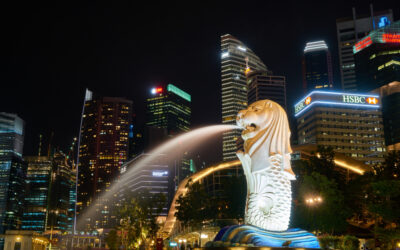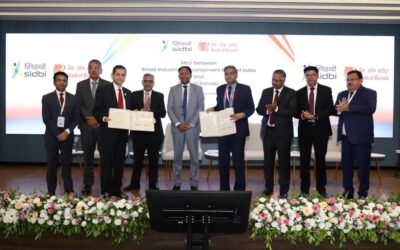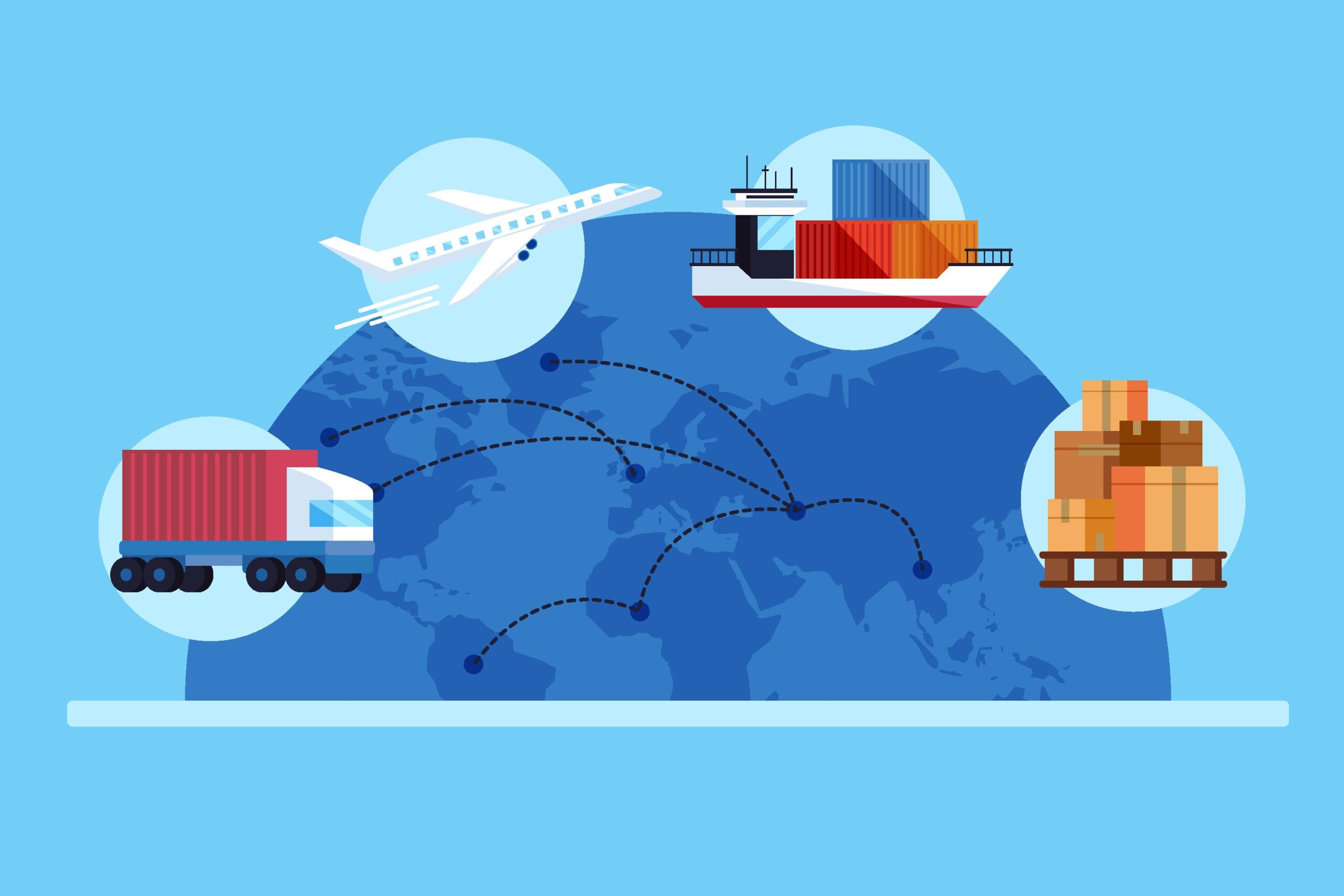India to Become Global Maritime & Logistics Hub with ₹66,000 Crore MoUs and Record 3PL Growth

India is witnessing an unprecedented transformation in its maritime and logistics ecosystem, with historic investments, strategic global partnerships, and rapid adoption of technology driving the nation toward becoming a global hub for shipbuilding, port-led industrialization and third-party logistics (3PL) expansion.
At the heart of this transformation was the MoU Exchange Ceremony held in Bhavnagar on 19th September 2025, on the eve of the “Samudra Se Samriddhi – Transforming India’s Maritime Sector” event addressed by Prime Minister Shri Narendra Modi. A total of 27 MoUs worth more than ₹66,000 crore were signed between central and state governments, international partners, and Indian public-private stakeholders. These agreements are set to create over 1.5 lakh jobs while unlocking new avenues for growth in ports, shipbuilding, waterway transport, logistics and green maritime infrastructure.
Union Minister for Ports, Shipping and Waterways Shri Sarbananda Sonowal described the event as a turning point for India’s maritime future, stating:
“India’s maritime sector is undergoing a historic transformation. These MoUs are not just about infrastructure they are about jobs, empowerment and establishing India as a leading maritime nation. With shipbuilding clusters, green projects, and global collaborations, we are steering India closer to Viksit Bharat 2047.”
Mega Port and Shipbuilding Investments
The most prominent among these projects is the ₹21,500 crore Bahuda Port Project in Odisha, being developed through a partnership between Paradip Port Authority, Visakhapatnam Port Authority, Sagarmala Finance Corporation Limited, and the Odisha Government. Spread across 6,700 acres of coastal land, the port will boast a 150 MTPA capacity, positioning it as a strategic anchor for eastern India’s industrial and logistics development. It is expected to generate 25,000 direct and indirect jobs, while spurring investments in manufacturing clusters, logistics parks and port-led industries.
Shipbuilding took center stage with Cochin Shipyard Limited (CSL) signing a marquee MoU with HD Korea Shipbuilding & Offshore Engineering to manufacture large commercial vessels in India, including Suezmax oil tankers and container ships. CSL is also investing ₹3,700 crore in a Block Fabrication Facility in Kochi, creating over 2,000 direct jobs. Simultaneously, a ₹15,000 crore shipbuilding complex in Tamil Nadu by CSL, and a parallel greenfield yard by Mazagon Dock Shipbuilders in Thoothukudi, will create thousands of skilled jobs and significantly raise India’s shipbuilding capacity.
Further boosting indigenous manufacturing, the Shipyard Association of India signed an MoU with the Indian Steel Association to ensure greater reliance on domestically produced steel, aligning with the Atmanirbhar Bharat mission and cutting down on import dependencies.
Sustainable & Heritage Projects
A major sustainability milestone was the ₹908 crore Water Metro Project in Patna, launched through a collaboration between the Inland Waterways Authority of India (IWAI) and the Bihar Government. The project will deploy energy-efficient electric ferries and modernized terminals across 10 locations, transforming public transport in the city while serving as a blueprint for future urban waterway projects nationwide.
Cultural heritage also received a boost, with an MoU to establish the world’s tallest lighthouse museum (77 metres) at the National Maritime Heritage Complex in Lothal, Gujarat. Valued at ₹266 crore, the project will preserve India’s maritime history while driving tourism and economic opportunities.
Financing India’s Maritime Growth
Recognizing the capital-intensive nature of maritime infrastructure, the Sagarmala Finance Corporation Limited signed multiple MoUs with global and domestic institutions including Neo Fund, NaBFID, IIFCL and Climate Fund Managers. These agreements will provide green financing, co-investment opportunities, and innovative debt mechanisms for shipbuilding, logistics, and port modernization projects, ensuring sustainable capital flows for India’s maritime sector.
India Emerges as Asia-Pacific’s Logistics Powerhouse
In parallel with maritime advancements, India is rapidly becoming the most-preferred market for third-party logistics (3PL) expansion in Asia-Pacific, according to a recent CBRE report. Nearly 70% of global occupiers plan to expand their 3PL operations in India within the next two years, underlining the nation’s growing importance in global supply chains.
3PL providers, which manage end-to-end logistics for businesses, have emerged as the largest demand drivers for India’s warehousing real estate market, contributing 40–50% of leasing activity between 2021 and 2024, and accounting for over 30% in H1 2025. The demand is largely driven by e-commerce, quick commerce, retail and manufacturing, with non-metro hubs such as Patna, Lucknow and Coimbatore also emerging as strong growth centres.
The report further highlights:
- 80% of 3PL players in India plan to expand their portfolios by over 10% in the next 2–5 years.
- 60% prefer asset-light models, leasing multi-tenanted warehouses over building or buying assets.
- 76% are adopting Warehouse Management Software (WMS), with growing investments in IoT sensors, automated storage systems, robotic arms and cobots to enhance throughput and efficiency.
- Delhi-NCR, Mumbai, and Bengaluru dominate as logistics hubs, accounting for nearly 65% of total leasing activity since 2021.
Anshuman Magazine, Chairman & CEO – India, South-East Asia, Middle East & Africa, CBRE, remarked:
“India’s resilient economic growth, rising consumption, and its strategic positioning amidst global supply chain realignments are making it a preferred destination for logistics expansion. The next five years will be transformative, with technology and scale reshaping how 3PLs operate in India.”
A Unified Growth Story
Together, the MoUs in the maritime sector and the surge in 3PL expansions form a comprehensive growth narrative for India. Massive investments in ports, shipbuilding clusters, and inland waterway projects are laying the foundation for faster, more cost-efficient trade, while the logistics and warehousing sector is scaling rapidly to meet the needs of e-commerce, manufacturing and consumption-driven industries.
What makes this even more significant is how these two developments complement each other. World-class maritime infrastructure provides the backbone for global trade, while advanced 3PL networks and future-ready warehousing ensure goods move seamlessly across the country and beyond. Both sectors are united by a common vision of Atmanirbharta (self-reliance), global competitiveness, job creation, and sustainable innovation.











